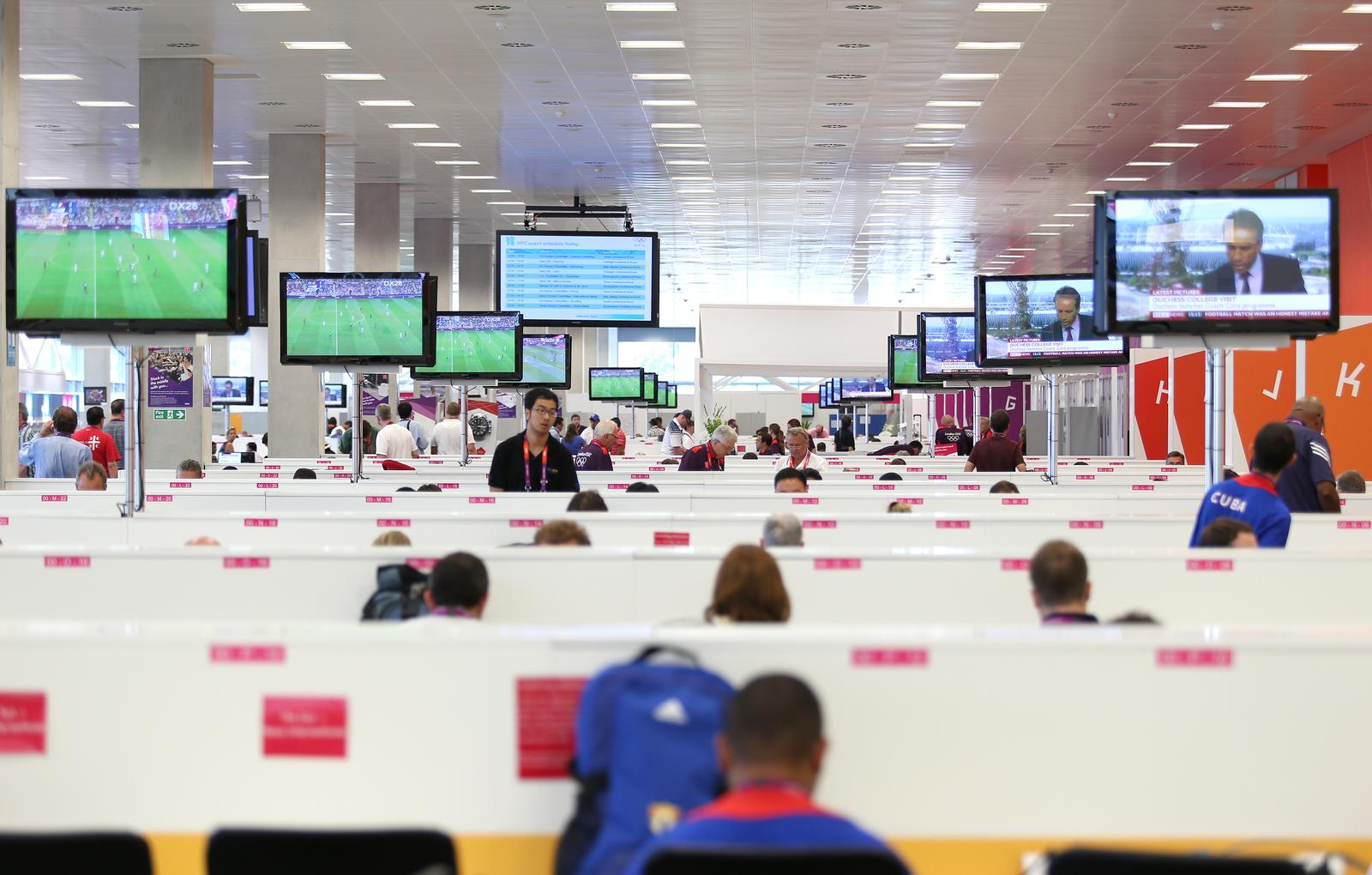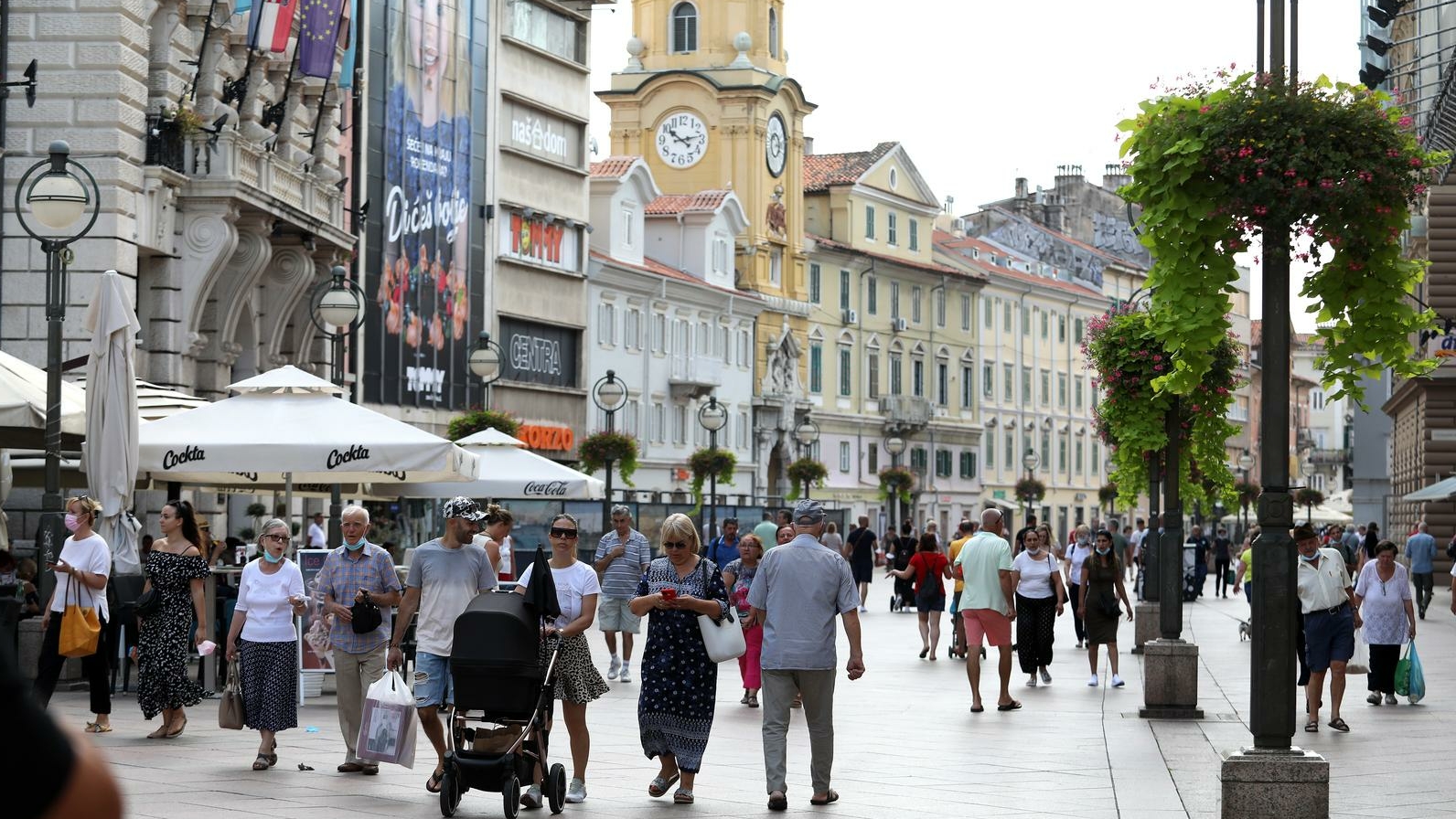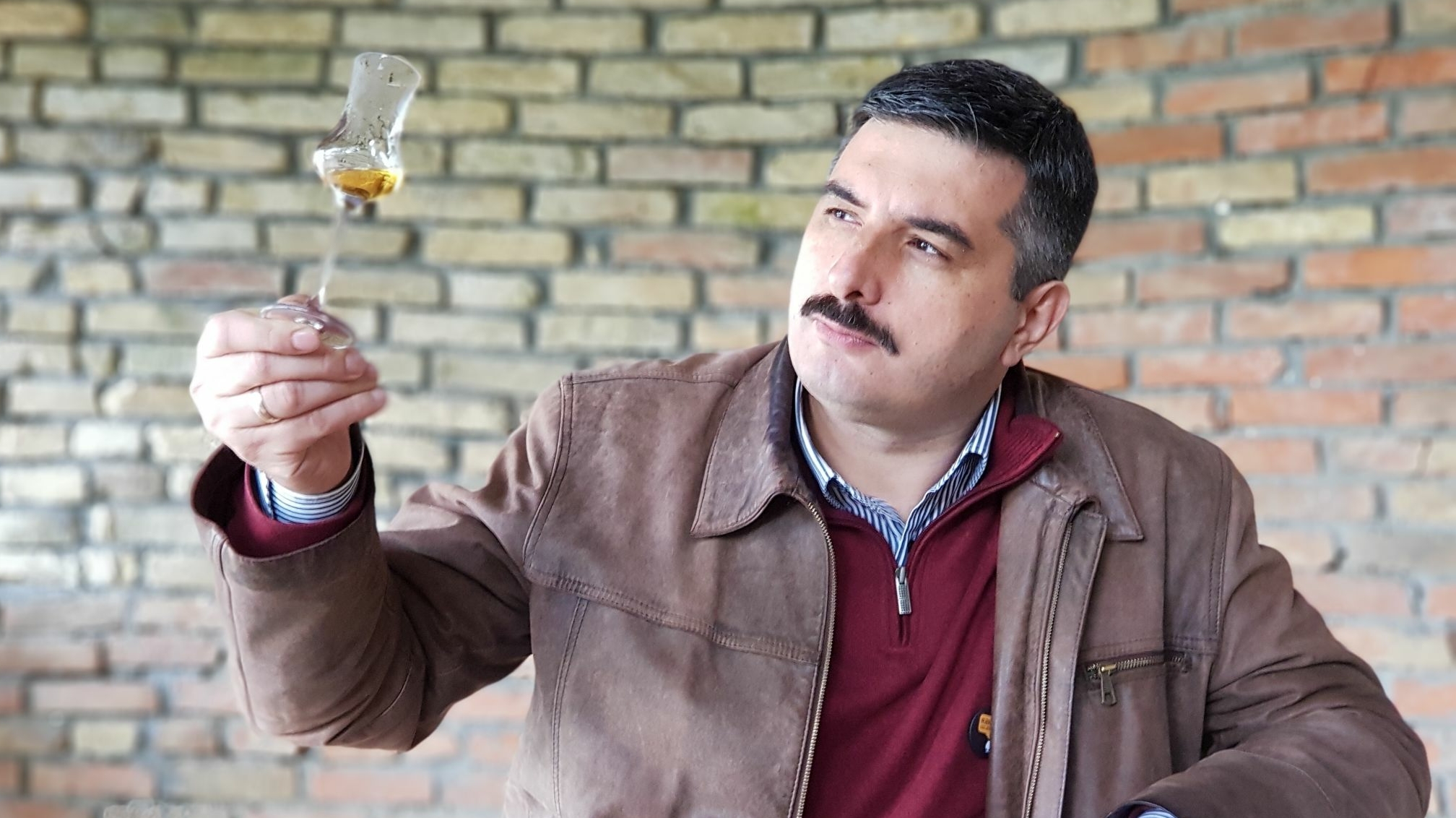Daily newspapers in Serbia and Croatia have been covering the same topic – the one on the front pages everywhere in Europe – quite differently. The domain of war journalism, if in the wrong hands, has always provided the opportunity to revive hatred against other nations and legitimize the violence committed by the favored party. It seems there are many journalists in the wrong profession among those reporting on this conflict.
The wrong profession becomes dangerous when it is directed towards the large readership of daily newspapers, becomes inhumane when it consciously distorts reality in order to justify aggressors and is nothing but shameless when it revives hatred that should have been buried long ago.
These are the conclusions of the analysis of the reporting on the conflict between Russia and Ukraine on the front pages of daily newspapers in Serbia and Croatia from 21 to 28 February 2022. We have analyzed 78 texts from 11 Serbian newspapers: Dnevnik, ALO!, Kurir, Danas, Vesti, Srpski telegraf, Informer, Politika, Večernje novosti, Blic and Objektiv. The sample of Croatian newspapers is smaller but still representative: Glas Istre, Jutarnji list, Slobodna Dalmacija and Večernji list.
The first week of the war
Serbian and Croatian dailies differ in their coverage of the beginning of the analyzed period. Most Croatian papers did not begin reporting on this topic until February 23, when it was clear the conflict was about to escalate. During the first two days of the analyzed period, February 21-22, they refrained from reporting unverified information and prognoses that would aid the spread of disinformation and panic.
However, the first piece of news about this topic in Glas Istre and Slobodna Dalmacija was concerned with the effect of the conflict on tourism in Croatia, showing that personal motives were their priority: “Will the situation in Ukraine be felt on the peninsula? If the conflict does not escalate, there will be no major consequences for Istrian tourism” (Glas Istre, Feb 23), and “If Putin makes a move, it will be devastating for our tourism” (Slobodna Dalmacija, Feb 23).
It is understandable that a newspaper article answers the question “How does that concern me (the reader)?”, but when the topic is the start of a war in a European country, the answer “Because it will affect our tourism” should not be valid.
On the other hand, Večernji list and Jutarnji list unequivocally condemned Russia’s recognition of the two self-proclaimed republics in Ukraine and so identified the aggressor right away, without seeking justification or stating their motives. The other two analyzed Croatian newspapers also quickly adopted this position, which means that none of them was pro-Russian in their reporting on the conflict in Ukraine.
The analyzed Serbian newspapers also show one-sided reporting, whose aim is to provoke a strong emotion in readers. The message sent to readers is that this war concerns them directly – not because of empathy and solidarity with the citizens of Ukraine, but because a connection is made with the situation in Kosovo and Bosnia and Herzegovina. Some of the headlines are: “Dangerous: the West draws Bosnia and the false country of Kosovo into NATO” (Večernje novosti, Feb 21), “Putin uses the West’s weaknesses and the same arguments NATO used when it attacked FR Yugoslavia” (Vesti, Feb 21), “Putin sends troops to unify Serbia and Republika Srpska” (Srpski telegraf, Feb 22), “There is concern that foreign centers of power could provoke conflicts in BiH and Kosovo” (Informer, Feb 21), “This is the same as NATO’s bombing of Yugoslavia” (ALO!, Feb 25). Quasi-historical arguments are used to justify Russia’s aggression (“Ukraine was created by Lenin, and he wrested it from Russia”, Informer, Feb 23).
“Ukraine attacked Russia” in the headlines
The arguments used by the analyzed Serbian media to describe the situation in Ukraine are almost identical to those used in the reporting on violence against women and girls: “He is actually a good man, but she provoked him, and it is her own fault.”
The most common conclusion, therefore, is that it is Ukraine’s fault it is under attack, that Putin has warned it repeatedly and that his aggression is therefore legitimate, justified and, finally, logical: “Russia has done everything it could for peace in Ukraine” (Kurir, Feb 22), “The Russian army is still not engaging in combat” (Kurir, Feb 23), “Whether and how far the Russian army will intervene depends solely on Ukraine and its mentors” (Informer, Feb 24), “The Russian attack is the answer to NATO’s threats” (Večernje novosti, Feb 25). Or, as Objektiv sees it, “the awakened bear is in a fury” (Feb 25).
What is more, the shelling and the victims are often blamed solely on Ukraine, which is portrayed as the attacker: “Ukraine attacks Russia” (ALO! and Informer, Feb 22), “the Ukrainian army bombs civil infrastructure” (Informer, Feb 21), “Kyiv threatens” (Večernje novosti, Feb 21), “Ukrainian tank operator prepares ammunition; Ukrainians shell a border checkpoint near Rostov, 150 meters within Russian territory” (Informer, Feb 22). The headlines also state that “the Americans are pushing the world into chaos” (Informer, Feb 22) and that “the US, NATO and EU have been pushing Ukraine into a bloody, fratricidal war every day for over six months” (Informer, Feb 21).
On the other hand, the Croatian media display a much greater variety of genres, interviewees and points of view. They report that the Istrians are ready to “accept refugees” (Glas Istre, Feb 27) (citizens’ opinions on this topic are absent from the Serbian media in the analyzed period); there are testimonies of Croatian citizens in Ukraine and vice versa, as well as of Croatian journalists at the scene in Ukraine.
The problem of authoritarian legacy
Meanwhile, in the Serbian newspapers, Russia is presented as a positive actor, a liberator: “Civilians seek shelter in Russia, calling on the Russian army to save the people from Donetsk and Luhansk” (Informer, Feb 22), “at least 50,000 women, old people and children have left eastern Ukraine for Russia” (Informer, Feb 21), “Putin brings freedom to Donbas” (Objektiv, Feb 23), “Russian peacekeepers arrive; citizens of Donbas thrilled with Russia’s recognition” (Informer, Feb 23), “Kremlin: Kyiv is lying, we do not attack residential areas” (Večernje novosti, Feb 27).
The glorification of Vladimir Putin and his depiction as an omnipotent, brave and determined leader is not surprising given the authoritarian legacy of both Croatia and Serbia, whose many citizens cherish the cult of the leader such as they see in Putin. Some newspapers go so far as to call him a genius (Objektiv) who “took the Western leaders by surprise” (Politika, Feb 23).
The culture of authoritarianism is evidenced by the phrase “the chief of Kremlin” (Srpski telegraf and Kurir, Feb 22 and 23), which shows that these newspapers see nothing problematic in there being a chief in a democratic society – on the contrary.
They also see nothing wrong in the threats Putin continually makes: “The West needs to come to its senses immediately; the smallest spark will set the world on fire” (Informer, Feb 21), “The chief of Kremlin sends a clear message to the West: Do not get involved because you will face consequences that you have never seen in your history” (Srpski telegraf, Feb 25), “Putin: Our goal is not the occupation but the denazification of Ukraine; whoever tries to intervene will face judgment day” (Informer, Feb 25), “The Russian president threatens with a nuclear response to anyone who intervenes in the conflict” (ALO!, Feb 25).
What is more, these threats are given positive connotations: “Putin wants to rebuild the empire: Russia returns to its imperial roots; his goal is to bring back the Soviet Union” (Kurir, Feb 23). Danas sees the explanation in the fact that “right-wingers believe the prevention of the ethnic cleansing of the Russian people is happening” (Feb 26). The headline “Putin: A gang of drug addicts and neo-Nazis is ruling in Kyiv and has taken the entire Ukrainian people hostage; they want civilians to die for them” (Objektiv, Feb 26) is a classic example of spin-doctoring.
However, although the Croatian sample shows a measure of consternation with Putin’s decisions with a hint of admiration, the condemnation of those actions is always present: “Putin is a tank that crushes everything before it: he started the war with Ukraine aware that only such moves will enable him to rule as long as he lives” (Glas Istre, Feb 28), “Will Putin turn the Balkans into a new Ukraine? The aggressor advances; the Ukrainian president begs the attackers to stop…” (Slobodna Dalmacija, Feb 26), “Putin’s riskiest game so far: what if he loses?” (Večernji list, Feb 27).
Finally, the analyzed Croatian media’s reporting contains unnecessary sensationalism which often resembles blockbuster announcements, such as: “Crime at the heart of Europe: destruction, killings, refugees fleeing…” (Slobodna Dalmacija, Feb 27). However, on the last day of the analyzed period, these newspapers take a firm stance of solidarity with Ukraine: “Putin, it is over: the civilized world stands with Ukraine” (Slobodna Dalmacija, Feb 28) and “War in Europe: the world united against Russia” (Večernji list, Feb 28).
Ukrainian soldiers and civilians ridiculed
From the beginning, all the analyzed Serbian media, except for Blic, Danas and Politika, depicted the balance of powers in a way that made Ukraine, the US, the West, the EU and NATO the main culprits in the conflict. An important exception to this is the front page of Blic from February 28, where Russia’s decisions are clearly and directly questioned for the first time: “No one understands what Russia is actually doing in Ukraine; Putin has no war plan and is only demonstrating force; Moscow’s official goals are so broad and unachievable that they only show true intentions are kept hidden.”
Indeed, Blic has firmly refused to copy the front pages of other tabloids in the country and has taken the opposite stance in its reporting. Their headlines leave no doubt that Russia is the aggressor that invaded Ukraine, which showed resistance but “could not offer serious resistance to the far more powerful, numerous and better-armed enemy.” This is a rare example from the sample in which Ukraine’s power is not ridiculed.
The tone of ridicule is present in the descriptions of the ease and speed with which Russia destroyed parts of Ukraine: “Putin checkmates Ukraine” (Informer, Feb 23), “Putin shocks the world, the EU and US are still trying to grasp what happened” (ALO!, Feb 23), “The Russian hurricane descends on Ukraine; Putin gets to Kyiv in a day; Russian forces inflict damage on Ukrainian forces in lightning-fast attacks” (ALO!, Feb 25), “The Russians overrun Ukraine in a day” (Objektiv, Feb 25), “Western cowards abandon Ukraine; Zelenskyy wants to negotiate, begs Putin to stop the attack; special forces walk into the city center” (Srpski telegraf, Feb 26), “Putin crushes everything in his path; the Russian army advances inexorably; Ukraine begs for mercy” (Informer, Feb 26).
Informer takes the lead when it comes to the amount of praise for Russia on one front page: “Putin’s lightning-fast strike, surgically precise, with no civilian casualties; Russian soldiers enter Ukraine virtually unresisted; the entire Ukrainian air defense destroyed in a few hours; officially 50 casualties, the Western media claim there are many more…” (Feb 25).
Warmongering rhetoric and conspiracy theories
Warmongering rhetoric is evident in certain newspapers, not only in the context of Ukraine and Russia but also in the context of Serbia and Croatia, although there are currently no conflicts between them. This especially culminated near the end of the analyzed period – more precisely, on the same day, February 25, as if by agreement: “War brokers: Croats, Bosniaks, Montenegrins and Albanians strike at Serbia” (Srpski telegraf, Feb 25), “The Croats perfidiously use the war in Ukraine to strike at Serbia” (ALO!, Feb 25), “The Croats are using the opportunity and threatening with an attack on Serbia” (Objektiv, Feb 25).
The sample shows that in Serbia, alongside reporting about the conflict, there is active spin-doctoring in which “Serbia is under threat” because it is “economically the strongest in the region”, and the perceived main enemies are Croatia, the Western media (Al Jazeera, DW, RTL), Dragan Đilas and Marinika Tepić (“Serbia will not join NATO: Đilas and Marinika in shock”, Objektiv, Feb 21; “Shameful: Đilas uses the conflict to break Serbia”, ALO!, Feb 26).
All the newspapers in this sample except Danas feature separate texts with unfounded claims that Serbia is getting modern weapons “from the east and the west” (Politika, Feb 22), which is “the best in the world”, and that it is getting new helicopters. On the first day of the analyzed period, the Informer “let slip” that Serbia “is preparing for the worst-case scenario.” Meanwhile, already on February 22, panic spread at the possibility of product shortages in Serbia.
It was not long before the first conspiracy theories appeared: “War for gas, the real background of the Ukraine crisis: the US uses the conflict to achieve its years-long plan to reduce the dependance of European countries on Russian gas, experts tell the Kurir (Kurir, Feb 24).
Other theories are: “We reveal: this is the Kremlin’s plan; Putin is breaking Ukraine into two parts, modelled after the East and West Germany” (Srpski telegraf, Feb 27). In this instance, the newspaper is boasting an exclusive piece not founded on evidence or the opinions of relevant experts. The next day, the same newspaper had a new theory: “In the next ten days, a cloud of particles from the war-afflicted country is expected to reach Serbia.” This example, in which the events in Ukraine almost became part of a weather forecast, the Srpski telegraf showed all the absurdities of war reporting in daily newspapers in Serbia.
Translation from Croatian: Jelena Šimpraga








